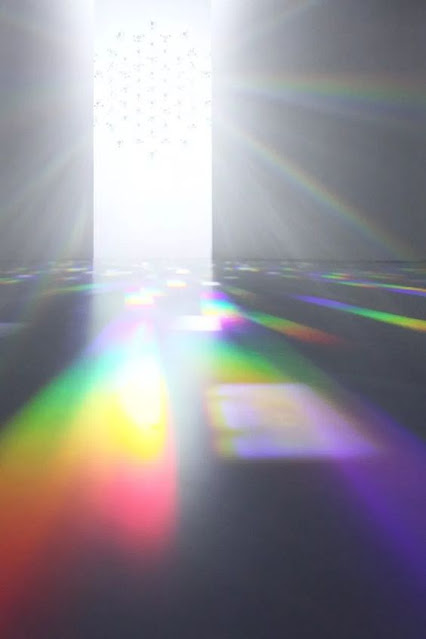People often call a daylight as white light. In fact, it doesn't have a specific color: it's electromagnetic radiation in the range visible to the human eye. A range of different visible colors can be observed with light dispersion. Dispersion are well known to all from childhood: is the spectrum splitting of a white light beam as light passes through a triangular prism: so white light is separated into its component colors as red, orange, yellow, green, blue and violet.
For most people daylight produces a color-neutral sensation. Therefore, we see all the colors available to our vision at the same time as neutral, colorless light from our star - the Sun. But the spectrum of the white light of the Sun, about 6000 K. Our Sun is a star of G-type main sequence. The sun is the brightest object in Earth's sky. The energy of this sunlight is source of beginning of life and supports almost all life types on the Earth through photosynthesis and and also controls the Earth's climate and weather. By the way, almost all energy sources owe their origin to the Sun ))
For millions of years, man perceives this light as biologically natural, and therefore the most pleasant, comfortable and favorite type of lighting. With the birth of the human mind, the admiration and adoration of the Sun, as the source of life, arose. The worship of the sun and sun gods has been found in all parts of the world since time immemorial.
I believe that the visual images and shapes of sunspots in contemporary architecture and modern interior design have a key role in the positive perception of living space during daylight time.
Sometimes the contemplation of sunspots and light spots in architectural space can give true peace, harmony and relaxation, incomparable with any man-made objects and forms. This can be compared with vision of nature and falling water))) In addition, sunlight is one of the most powerful design and modeling tool for architectural space!
I hope you can have fun watching my favorite images and shapes of sunlight in architectural design )))
Tokujin Yoshioka’s Spectrum Installation Explores the Awe of Light. Installation demonstrate the relationship between humankind, light and nature: “an almost mystical journey through light”.
“This installation coveys the aura of nature, the passage of time and the beauty of light itself, and aims to arouse human senses conveying the mystery of rainbow rays refracted through prisms,” explained Tokujin.
“Sunlight, moonlight and shimmers of water – the beauty of them has mystic energy that cannot be fully grasped,” said Tokujin. “Natural light that all living creatures can sense its power has infinite colours in its whiteness and transparency.”
Can architecture achieve what humans can at best aspire to? Can it forge a dialog between religions and thus reveal common ground while also capturing the differences? Putting the focus on the unifying element of the three religions: the first price awarded design by Berlin-based architects Kuehn Malvezzi. Photo by Kuehn Malvezzi.
Designer Giles Miller has worked with visualizer Forbes Massie to draw up designs for a huge monument with a cross-shaped plan and textured brick walls. Entrances on the eastern and western points would welcome visitors into the space. A single shaft of daylight shown permeating through the center of the building is intended as the only natural light source within the monument.
Carpenter Center / Cambridge, Massachusetts
Brione house by Wespi de Meuron Romeo Architects


Phil Buerer, an architectural visualizer, plays with light, color, and shadow and fuses minimalist with architectural photography in this series.
interior by Frantisek Kudivani
Lighting Studies in UE4
San Pellegrino Factory and Headquarters in Northern Italy







































Darya, You are brilliant and insightful. -Tom
ReplyDelete